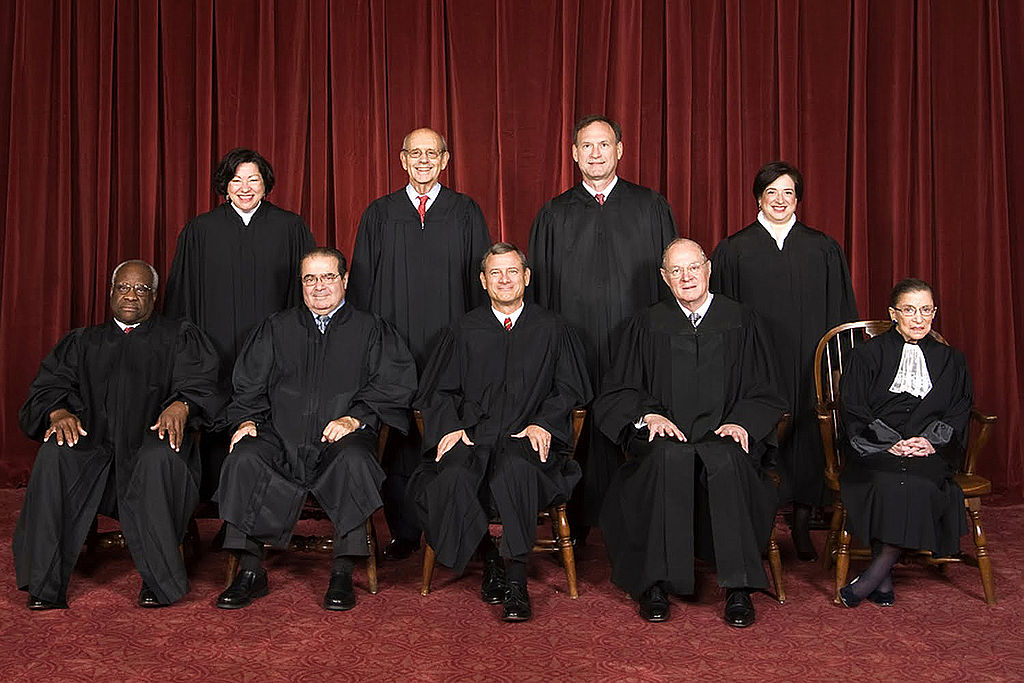As a nation, we are fortunate that the Supreme Court ruled that the University of Texas admission plan “clearly reconciled the pursuit of diversity with the constitutional promise of equal treatment and dignity.”
In Fisher v. University of Texas, the court considered the case of Abigail Fisher, who claims she didn’t get in to UT because the school preferred non-white candidates. Critics of affirmative action in admissions often frame the matter like that: as a rule that says when two exactly equal candidates apply for a spot in a university, the minority candidate is chosen each time. This is a gross and purposeful simplification of what actually occurs.
In their ruling Thursday, the justices didn’t buy Fisher’s argument. “Drawing all reasonable inferences in her favor,” Justice Kennedy wrote in the majority opinion, “petitioner has not shown by a preponderance of the evidence that she was denied equal treatment at the time her application was rejected.”
At UT-Austin, the Top Ten Percent plan has filled about 75 percent of the places in the freshman class. However, recent adjustments by the Texas Legislature has meant that to be admitted under this category, a student must actually finish in the top seven or eight percent of his or her class.
After the admissions from the Top Ten Percent Plan are finished, UT-Austin adopts an approach similar to the one used by the University of Michigan Law School (and affirmed in the Grutter case). For the remaining 25 percent or so of an incoming class at UT-Austin, Kennedy wrote, race is only a “factor of a factor of a factor.”
 In essence, the secondary admission process is a “holistic-review calculus” of many factors. The majority opinion that the consideration of race at UT-Austin “is contextual and does not operate as a mechanical plus factor for underrepresented minorities.”
In essence, the secondary admission process is a “holistic-review calculus” of many factors. The majority opinion that the consideration of race at UT-Austin “is contextual and does not operate as a mechanical plus factor for underrepresented minorities.”
Not discussed in the current ruling, but I believe relevant, is that Fisher did not fall below a bright line by which Whites were rejected and minorities admitted. As reported in The Nation, UT-Austin offered admission “to some students with lower test scores and grades than Fisher. Five of those students were Black or Latino. Forty-two were White.” Additionally, “168 Black and Latino students with grades as good as or better than Fisher’s who were also denied entry into the university that year.”
It is unfortunate that Fisher believed wrongly, in spite of factual evidence and data to the contrary, that she was discriminated against because she is White. In fact, by pursuing a case where the data was very clear on this point, she continued the insecurity and insidiousness of racial prejudice that has unfortunately permeated our society for centuries.
The Supreme Court continued in the majority decision that, to use race as a factor in admissions at all, a “university’s goals cannot be elusory or amorphous — they must be sufficiently measurable to permit judicial scrutiny of the policies adopted to reach them.”
What did UT-Austin have in mind when admitting that second round of students, the ones who didn’t make it in through Top Ten Percent Admissions? The court found that UT-Austin “articulated concrete and precise goals — e.g., ending stereotypes, promoting ‘cross-racial understanding,’ preparing students for ‘an increasingly diverse workforce and society,’ and cultivating leaders with ‘legitimacy in the eyes of the citizenry.'”
The justices found that “the University studied and deliberated for months, concluding that race-neutral programs had not achieved the University’s diversity goals.”
The lasting implication of this decision, I believe, is that universities have to do their homework. The University of Texas was very thorough in its empirical process to understand the weaknesses of the Top Ten Percent Plan and justification for a second calculus. Their carefully designed educational goals stood up to strict scrutiny.
This high standard will likely cause those that oppose the consideration of race among many factors to sue colleges or universities that haven’t been so thorough. So my message to my academic brethren is: Do the necessary background work. Be sure that your admissions policies are in the best interest of your students and faculty.
The University of Texas at Austin, and in particular, its former president, William Powers, deserve recognition for designing and supporting an admissions program that passed constitutional strict scrutiny. By “ensuring that race plays no greater role than is necessary,” UT’s admissions program provides a road map forward for American colleges and universities.
This article first appeared here in the Houston Chronicle.
See also Fisher Letter Boston Globe Refused to Print and Entitlement by “race”: What Abigail Fisher didn’t tell you…
Please Facebook Like, Tweet, etc below and/or reblog to share this discussion with others.
Want to know about Cloaking Inequity’s freshly pressed conversations about educational policy? Click the “Follow blog by email” button on the home page.
Twitter: @ProfessorJVH
Click here for Vitae.

I’ve always found it interesting that both President Obama and Justice Sotomayor recognize publicly that each got to her/his current status through affirmative action at one level or another and yet we can all still sit around and “wonder” if it’s a good idea.
LikeLike
Uh; Scalia died end of story.
LikeLike